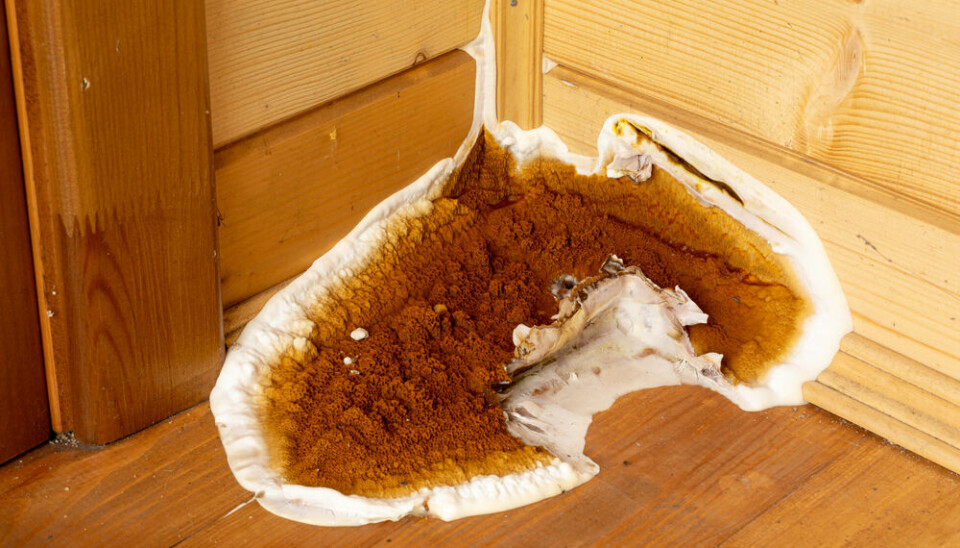House ruined by wood-rotting fungus - ‘French insurance will not pay’
Fungus can be swept in through windows and vents and lead to extensive damage. Insurers consider it homeowners’ fault
The fungus can take many different forms
LariBat/Shutterstock
Damage from an increasingly common fungus in France – which rots wood and can destroy homes – is not always covered by insurers despite repairs costing tens of thousands of euros.
A fungus called mérule pleureuse (Serpula lacrymans, or weeping merula) can affect damp and poorly-ventilated homes, springing up and eating into wood throughout the property.
A couple who own a home close to Limoges (Haute-Vienne) recently told local media about their experience with the fungus, which has left their home absolutely destroyed.
“There's a risk of the house collapsing, all the support beams are attacked, and [the fungus] is behind all the skirting boards,” Anne-Lise and Christophe Botté told France3.
They feel ‘abandoned’ by both the government – who does not have any specific procedures to help victims of the fungus – and by their insurance company, who do not provide cover against it.
“The law doesn't oblige [insurance companies] to cover this risk,” they added.
Most multi-risk home insurance policies (assurance multirisques habitation) do not cover for damage from the fungus.
This is because insurers generally cite its proliferation within a home as a case of poor maintenance - not providing adequate ventilation – instead of an accident.
The cost of removing the fungus from a single wooden beam can reach up to €7,500, rising to €70,000 if the wooden structure of a home is affected.
Risk of fungus on rise
More than 2,000 communes in France – mostly in the north and west – contain properties which are at risk of mérule damage.
However, the fungus has been spreading further south, and homes in the Gard and Hérault departments were recently found to be impacted by the fungus.
Whilst there are tests to uncover its presence in a property, these are not mandatory, even in departments where most communes are affected.
Read more: Heat pump insurance cover downgraded for many home owners in France
How can I spot the fungus?
The naturally occurring fungus is common across much of France, particularly the north and west, and can arrive through open windows, doors, ventilation, or people accidentally bringing it in.
In most cases, the spores quickly die off once inside, however in a damp home can quickly thrive and multiply.
The fungus can take the appearance of multiple forms, including an orange-red ‘sludge’, white cotton-resembling spores, or grey-ish spider webs.
It can seep through materials such as plaster and stone, eating at the wood underneath, and thrives in dark places property owners rarely look, meaning it can be months before it is spotted.
However, the fungus can produce a strong, musty smell, which can be an indicator that a home is affected.
Read more: How to check for leaks in your French home without a smart water meter
How can I prevent the fungus infecting my home?
Once the fungus has infiltrated your home, it can be difficult to get rid of without the help of a professional.
If your home is less than ten years old, you will be covered by the assurance décennale insurance in the case of an infestation as the home should be well-ventilated.
For older properties, you can negotiate with your insurer to get additional cover against mérule damage.
Read more: Water leaks, blocked pipes: what does home insurance cover in France?
If you live in an area where the risk of mérule is higher – you can find a map of affected departments here – you can get a property diagnostic for the fungus.
This diagnostic is usually provided by the same experts who cover over wood infestations, such as from termites.
It can identify both the presence of the fungus, and if your home is susceptible to damage due to poor ventilation or damp conditions.
Even though this is not currently a mandatory diagnostic required when purchasing a property, you can demand a diagnostic is carried out on a home before buying it.
In addition, once having purchased a home, you can call in an expert to run a check. This should be done every six months, and costs between €200 and €400.





























